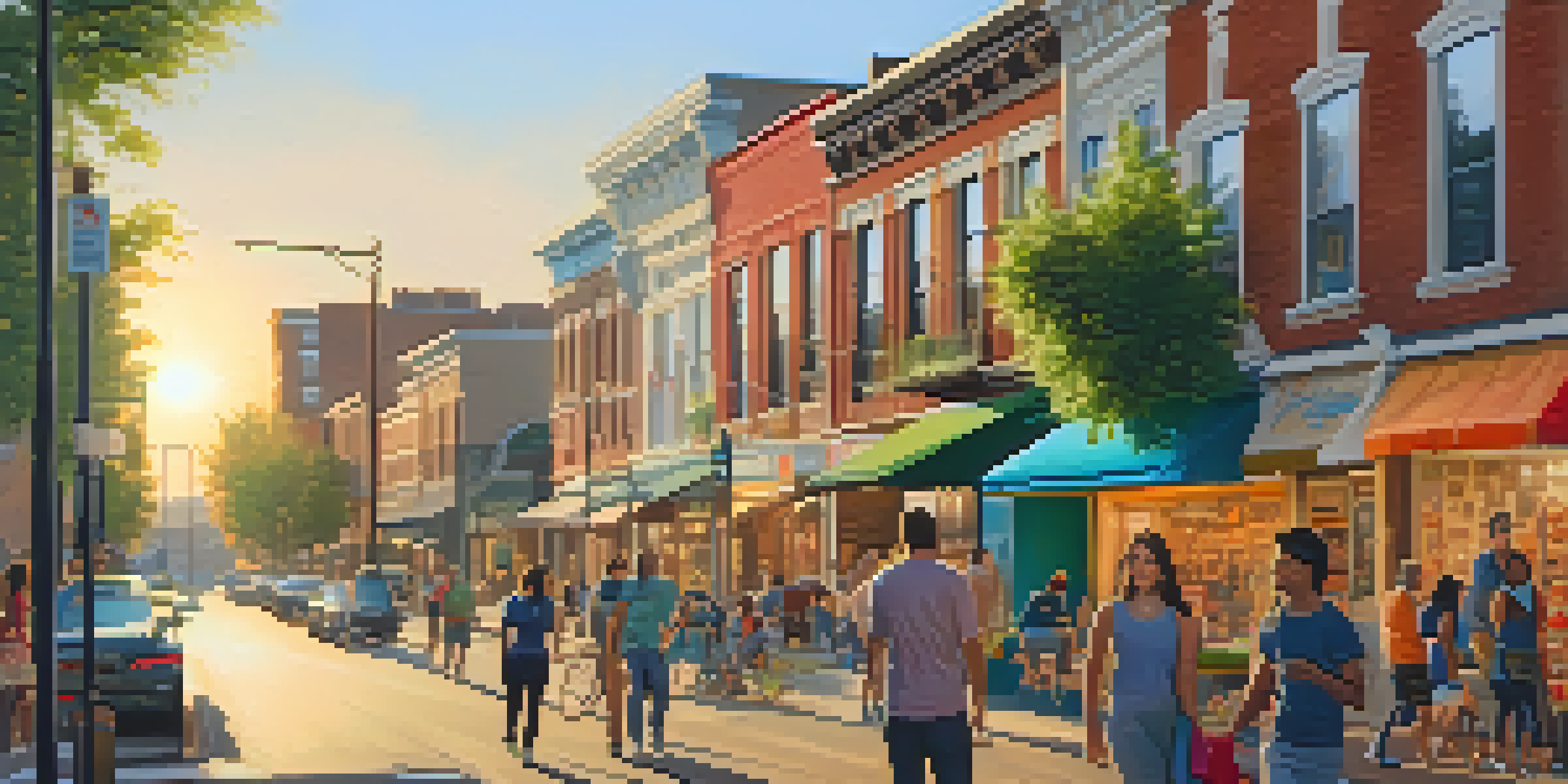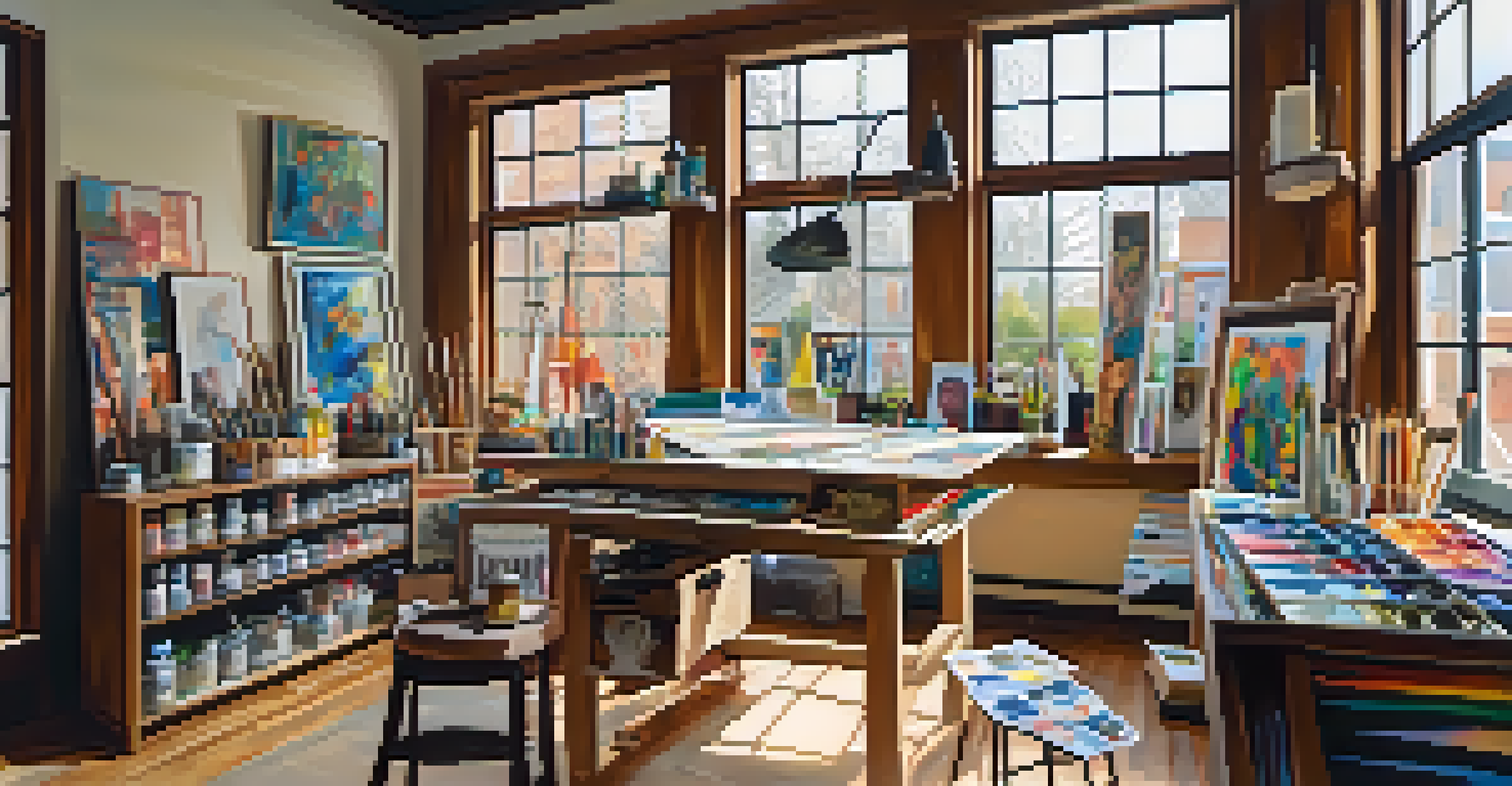Neighborhood Character: Gentrification's Impact on Identity

Defining Neighborhood Character in Urban Spaces
Neighborhood character refers to the unique traits and qualities that define a community. This includes elements like architecture, cultural diversity, and long-standing traditions that contribute to a sense of belonging. When people talk about a neighborhood’s charm, they often mean its character, which shapes how residents and visitors experience the area.
Gentrification is a complex process that often displaces long-time residents while simultaneously revitalizing neighborhoods.
However, neighborhood character is not static; it evolves over time as communities change. From historical landmarks to local cuisine, each aspect reflects the people who live there. Understanding this character helps us appreciate the essence of a place and the stories woven into its fabric.
As gentrification occurs, the existing neighborhood character can be challenged. New developments and an influx of different demographics can lead to a clash of identities, prompting discussions about what should remain and what should change.
The Role of Gentrification in Shaping Identity
Gentrification often brings a wave of new investment and development, which can lead to improved infrastructure and services. However, this process also raises questions about who benefits from these changes. Long-standing residents may find themselves sidelined, feeling that their identity is being overshadowed by newcomers.

For example, imagine a vibrant neighborhood known for its street art and local music scene. As upscale cafes and boutiques open, the original artists and musicians might feel pressured to leave, altering the very essence of the community. This shift can create a sense of loss for those who have called the area home for years.
Neighborhood Character Evolves
Neighborhood character is shaped by architecture, culture, and traditions, but it changes over time due to various factors, including gentrification.
The challenge lies in finding a balance between revitalization and preservation. While some changes can enhance a neighborhood, it’s crucial to ensure that the voices of existing residents are heard in the process.
Community Responses to Gentrification
In response to gentrification, many communities are taking action to preserve their identity. This includes organizing local events that celebrate cultural heritage, such as festivals, art shows, and community gatherings. Such initiatives not only strengthen community bonds but also ensure that the unique character of the neighborhood is recognized and valued.
Preserving the character of a neighborhood is about respecting its history and its people.
Moreover, grassroots movements often emerge, advocating for affordable housing and equitable development. Residents unite to voice their concerns and push for policies that protect their homes and livelihoods. These efforts are critical in maintaining a neighborhood’s identity amidst the changing landscape.
Engagement and activism can empower residents, fostering a sense of ownership over their community. By standing together, they can influence how their neighborhood evolves while still honoring its rich history.
Cultural Preservation Amid Urban Change
Cultural preservation plays a vital role in maintaining neighborhood identity during gentrification. Efforts to protect historical sites, art, and local businesses can help retain the character that attracted newcomers in the first place. This can include landmark designations or support for local artists and entrepreneurs.
For instance, community organizations often work to create spaces for local artists to showcase their work, ensuring that the cultural narrative is not lost. These spaces can serve as a reminder of the neighborhood's heritage while also providing a platform for new voices.
Gentrification's Double-Edged Impact
While gentrification can bring economic growth and investment, it also poses risks to long-standing residents and the unique identity of communities.
By prioritizing cultural preservation, neighborhoods can embrace change without sacrificing their unique identity. This approach helps foster a sense of pride and continuity among both longtime residents and newcomers.
The Economic Aspects of Gentrification
Gentrification often brings economic growth, which can be a double-edged sword. On one hand, new businesses can boost local economies and create jobs; on the other, rising rents can displace longtime residents. This economic shift can lead to increased inequality within the community, as wealthier newcomers move in.
Consider a neighborhood that once thrived on small, family-owned shops. As larger chains take over, the local economy may struggle to adapt, and the character of the shopping experience changes drastically. This transformation can alienate longtime residents who feel priced out of their own community.
It's essential for local governments and stakeholders to consider these economic impacts carefully. Policies that promote inclusive growth can help ensure that all residents benefit from development, allowing the neighborhood to thrive without losing its identity.
Social Dynamics and Community Identity
Gentrification often alters the social dynamics within a neighborhood, affecting relationships among residents. As new populations move in, there can be both opportunities for cultural exchange and challenges related to integration. These shifts can either enrich the community or create divisions, depending on how they are managed.
For example, a neighborhood previously characterized by close-knit relationships may see those bonds fray as new residents arrive with different priorities and lifestyles. This can lead to misunderstandings and conflicts, impacting the sense of community that once thrived.
Community Activism for Preservation
Residents are increasingly organizing to celebrate their cultural heritage and advocate for affordable housing, ensuring their neighborhood's identity remains intact.
Encouraging dialogue between different groups can help bridge these gaps. Community meetings and collaborative projects can foster understanding and create a shared vision for the future, allowing the neighborhood to retain its identity while evolving.
Looking Ahead: The Future of Neighborhood Identity
As cities continue to grow and evolve, the future of neighborhood identity is a pressing concern. It’s vital to consider how gentrification will shape the communities we live in, both now and in the years to come. Thoughtful urban planning and community engagement can play significant roles in this evolution.
To create neighborhoods that honor their past while embracing the future, stakeholders must prioritize inclusive practices. This means listening to the voices of all residents, ensuring that development benefits everyone, and protecting the unique character of each community.

Ultimately, the goal should be to foster neighborhoods that are not only vibrant and economically viable but also rich in history and identity. By valuing what makes a community special, we can navigate the challenges of gentrification more effectively.